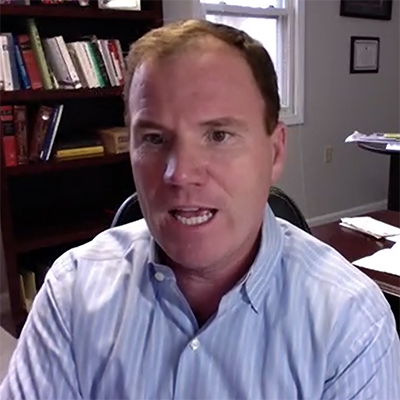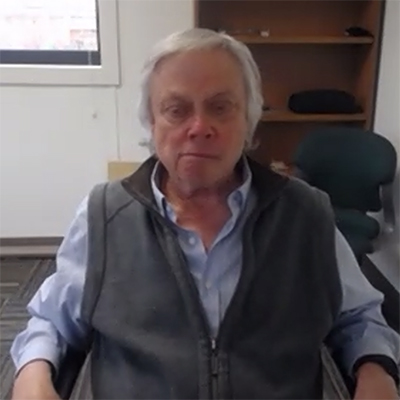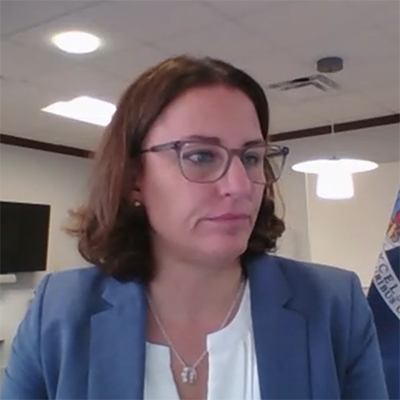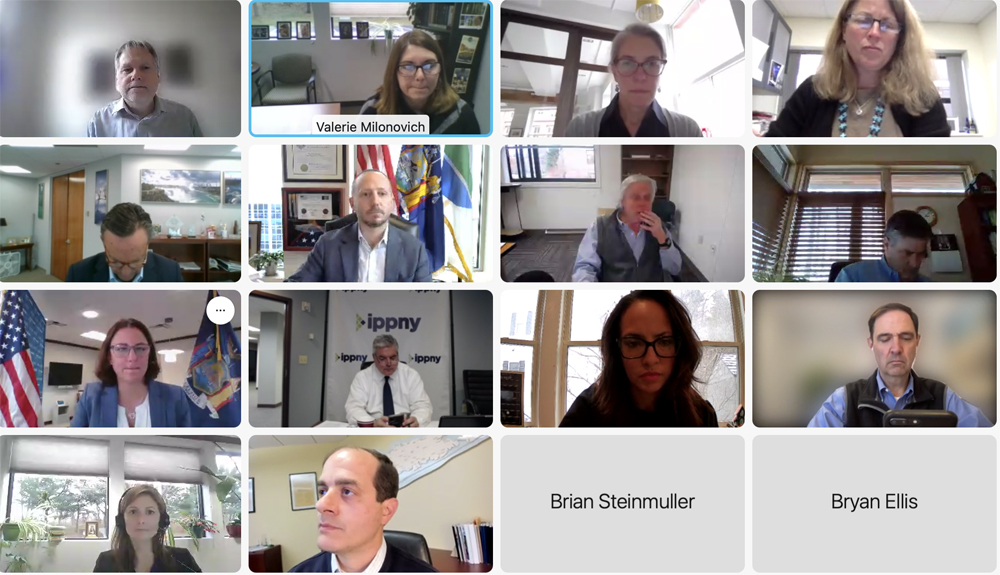
A study commissioned by New York officials predicts that clean energy employment in the state will increase by at least 211,000 jobs this decade and by nearly 350,000 by midcentury.
 Philip Jordan, E3 | NYDPS
Philip Jordan, E3 | NYDPSThe preliminary results from the report by the Climate Action Council’s Just Transition Working Group also finds that 10 new jobs will be created for every job displaced through 2030 by the state’s move away from fossil fuels. The growth subsectors include electricity distribution and transmission, onshore and offshore wind, solar, battery storage, and the building and transportation sectors.
“That’s really enormous job growth … a rate that’s more than double the annual growth rate from 2016 through 2020,” Philip Jordan of Energy and Environmental Economics (E3), which conducted the study, told the council Tuesday.
Drilling into Data
Following a growth rate of 15% from 2016 to 2019, energy efficiency jobs declined by nearly 5% with the advent of the pandemic but have been rebounding since the low point of the second quarter last year, according to the state’s 2021 Clean Energy Industry Report recently released by the New York State Energy Research and Development Authority (NYSERDA).
 Carl Mas, NYSERDA | NYDPS
Carl Mas, NYSERDA | NYDPSAt the end of 2020, there were approximately 157,700 clean energy workers in New York, and clean energy jobs comprised roughly 2% of all jobs in the state, but less than 1% of jobs lost in the economic downturn, said Carl Mas, director of energy and environmental analysis at NYSERDA.
Clean energy employment in New York a year ago was still about 12% higher compared to the 2015 baseline, Mas said.
Displacement of jobs could total 77,000 by midcentury, and the jobs study is intended to provide data to help officials develop workforce training and identify opportunities across the state, especially disadvantaged communities, Mas said.
One CAC member was surprised that the job growth isn’t greater between 2030 and 2050.
 Robert Howarth, Cornell University | NYDPS
Robert Howarth, Cornell University | NYDPS“There’s a pretty rapid increase until 2030, and then I would expect all sorts of actions need to be taken afterward, that they would increase it more,” said Robert Howarth, professor of ecology and environmental biology at Cornell University.
The large job growth early on stems from the inputs given to the team, Mas said.
To hit the state’s goal of 70% renewable electricity by 2030 requires “a massive level of investment in order to ramp up, and when we think about jobs, interestingly it’s not the absolute amount of capacity; it’s the annual scale of change that’s driving jobs each year,” Mas said.
Howarth also said that projected declines in gas station employment could be lowered by encouraging the creation of 440 fast-charge stations, which probably would feature cafes and convenience stores that would maintain the retail jobs.
Mas agreed and said that the scale of investments is starting faster than probably most analysts had expected five years ago.
“Because of that, we’re driving job creation sooner and then sustaining those jobs over time as we retrofit more homes and as we build and deploy more solar panels,” Mas said.
 IPPNY CEO Gavin Donohue | NYDPS
IPPNY CEO Gavin Donohue | NYDPSGavin Donohue, president and CEO of the Independent Power Producers of New York, asked if there was anything being done about non-energy manufacturing and job loss as a result of increased energy costs. The study talks about nuclear jobs being lost, but no licenses come up for renewal before 2029, he said.
The anomaly comes from the base year including the closure of the Indian Point nuclear station, Mas said.
“I understand that … though we’re talking about a decrease of use of natural gas as a state, but I didn’t see a job impact and changes in other industries like agriculture or farming,” Donohue said. “There has to be an impact in those sectors if we’re having impacts in other sectors, so that’s the question maybe we can answer later, but it’s an omission on the study’s part.”
Moving Forward
 NYSERDA CEO Doreen Harris | NYDPS
NYSERDA CEO Doreen Harris | NYDPSNYSERDA on Tuesday finalized contracts with Clean Path New York and with Hydro Quebec Energy Services for the Champlain Hudson Power Express and filed them for comment and approval with the Public Service Commission, council Co-chair and NYSERDA CEO Doreen Harris announced.
“All told these are the largest transmission projects contracted for in New York state in the last 50 years and will reduce the city’s fossil fuel use for electricity by more than 80% in 2030 when combined with their other clean energy investments,” Harris said. (See Two Transmission Projects Selected to Bring Low-carbon Power to NYC.)
The two separate projects total 2,550 MW and will bring solar, wind and hydropower south to New York City.
The CAC will meet in December to vote on a final draft scoping plan for achieving the goals laid out in the Climate Leadership and Community Protection Act, which will be discussed over the course of 2022 before implementation the following year.
NYSERDA will bring forward benefit-cost analysis at the next meeting, and will also be exploring a sensitivity around higher adoption rates for ground source and district heat pumps, Mas said.
 The New York State Climate Action Council met virtually Nov. 30 to discuss a report on clean energy jobs growth this decade and through 2050. | NYDPS
The New York State Climate Action Council met virtually Nov. 30 to discuss a report on clean energy jobs growth this decade and through 2050. | NYDPSNot every home and apartment in New York could adopt a ground-source system, so there would be a role for district heating that may be sourced by water or ground or other resources, Mas said.
“So we will be exploring that to give us some better insights into the technical feasibility and also some of those cost tradeoffs,” he said. “While it may be more expensive to invest in these upfront, we also will see system benefits through a smaller grid.”

